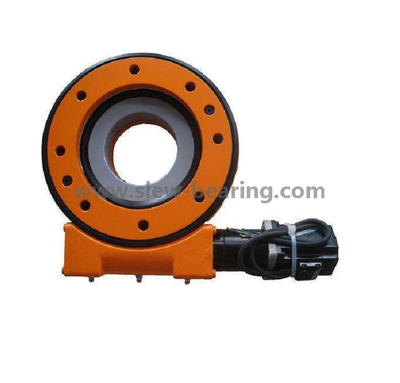Views: 162 Author: Site Editor Publish Time: 2020-08-17 Origin: Site








A slewing drive is a gearbox designed to handle radial or axial loads using high rotational torque. In addition, the slewing ring bearing, at the heart of the drive, enables it to withstand high overhung or moment loads. A descendant of the “worm” screw, slewing drives are present in construction machinery, manufacturing, military equipment and many other applications that require strength and precision. This article will introduce how to choose the right slewing drive.

How to choose the right slewing drive
What are your actual performance requirements?
What are your expected environmental conditions?
What are your expected axes of rotation and motion ranges?
What are your required backlash tolerances?
What are your power requirements?
The physics of the slewing drive makes it a versatile solution for many applications. In operation, the slewing drive’s axial movement, or motion around its axis, interacts to create radial torque. The action occurs by meshing the grooves of the horizontal screw with the teeth of a perpendicular gear. While turning, the worm gear’s axial movement transfers magnified torque force to the radial gear. The number of threads on the horizontal screw and the number of gears that interact will determine the speed ratio of the setup.In many ways, slewing drives are unsung heroes, delivering the positional accuracy and mechanical control that make much of modern technology possible. Like any precision engineering component, however, the effectiveness of a slewing drive is the direct result of selecting the right one for your specific application requirements.
While many factors are involved in identifying the best slewing drive design for your needs, wisely evaluating your own application parameters starts with a small set of basic questions.
The most cost effective and reliable drive design will be the one that fits a minimum size profile while also meeting particular structural, power, duty cycle and survivability holding torque values. Fully appreciating your actual operating requirements is critical when evaluating slewing drive designs intended to meet them.
Your slewing drive’s protective outer casing must be sufficient to ensure a long mechanical life, reliable performance and adequate defense against the surrounding elements. Will theslewing drive be exposed to dust, dirt or other particulate contaminants? Will water or other liquids be a concern? Slewing drives are available with IP55, IP65, IP66 and other standard rated housings for various environmental conditions, as well as fully exposed open architecture anything you need to confront even the most challenging stresses.
A best-fit slewing drive design will easily and smoothly accommodate a necessary range of motion about one or more rotation axes. Slewing drives can be designed with single or dual-axis rotation capability in any specific motion range.
Backlash, also called play or lash, refers to the slewing drive’s accuracy. It is a measure of the clearance existing between the gear teeth, gaps that result in lost motion potential in the slewing drive. Greater backlash tolerances looser gear fittings may be necessary to accommodate thermal expansion, bending stresses or other engineering concerns. Backlash, however, limits the accuracy of the drive and the efficiency of kinetic energy transmission between the gears.
A slewing drive can be designed using one of many different common types of power systems. Slewing drives are available with electric (DC brushed/brushless and AC motor), hydraulic and hand rotation power controls.
Selecting the right combination of slewing drive design factors can be a detailed and complex process, but it doesn’t have to be a difficult one and you don’t need to tackle it alone. Our company specializes in the production of various kinds of slewing drives, If you need slewing drive, please contact us.
Home | About Us | Products | News | Application | Support | Contact Us


